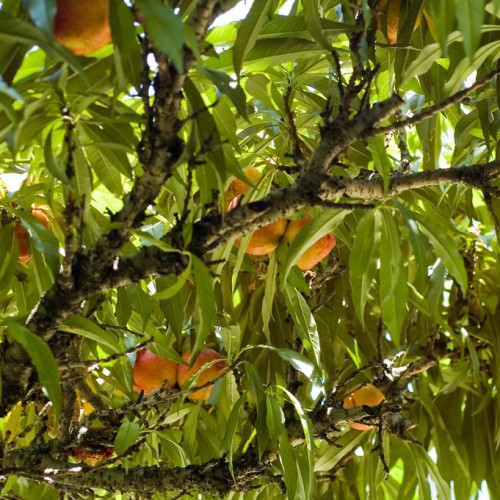
dwarf nectarine
Prunus persica var. nectarina 'Mericrest'
Cycle:
Perennial
Watering:
Average
Hardiness Zone:
5 - 8
Flowers:
Flowers In Spring
Sun:
Full sun
Fruits:
Fruits Ready In Summer
Edible:
Yes
Leaf:
Yes
Growth Rate:
Low
Maintenance:
High
Care Level:
Medium
watering
The dwarf nectarine thrives in full sun and moderate temperatures. The soil should be well-draining and be kept evenly moist throughout the growing season. It is recommended to water the plant deeply once a week, allowing the soil to dry out slightly between waterings. As temperatures start to rise and the soil begins to dry out more quickly, the plant may need to be watered more frequently. It's also important to monitor the soil and adjust the watering schedule accordingly, being careful not to overwater the plant which can lead to root rot.
sunlight
Dwarf nectarines (Prunus persica var. nectarina 'Mericrest') need 6-8 hours of direct sunlight each day to produce quality fruit. For optimal growth, this plant should be planted in a location that gets morning sunlight and then shade the afternoon. For areas with particularly hot and sunny summer days, a little afternoon shade will help to keep the plant from becoming sunburnt and dropping its foliage. In the spring and fall, dwarf nectarines can also do well in full sun all day.
pruning
For a Dwarf Nectarine (Prunus persica var. nectarina 'Mericrest'), pruning should be done when the tree is dormant (late winter or early spring) and should be limited to only the most necessary cuts. Pruning should remove any dead or damaged branches, and should thin out any congested areas. Heavy pruning should be avoided to prevent the tree from becoming too weak or overly stressed. In addition, pruning should be done at a height of 3-4 feet to help keep the tree compact and reduce the risk of branches breaking from heavy fruit.
